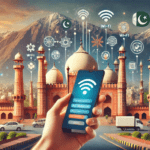When you think of Middle Eastern and South Asian cultures, it’s easy to lump them together due to their geographical proximity and shared Islamic faith. However, Pakistani and Arabian cultures are as distinct as night and day. Let’s dive into the vibrant world of these two fascinating cultures and uncover what sets them apart.
A Tapestry of Languages
One of the most striking differences between Pakistani and Arabian cultures is the language. In Pakistan, Urdu reigns supreme, peppered with regional languages like Punjabi, Sindhi, and Pashto. Urdu, with its poetic elegance, carries the literary legacy of centuries, blending Persian, Arabic, and Turkic influences.
On the other hand, Arabic is the unifying language across the Arabian Peninsula, spoken in various dialects from the Gulf to the Levant. Arabic’s rich, classical form is revered in the Quran, and its modern dialects reflect the diverse regions within the Arab world.
Culinary Delights
Pakistani cuisine is a delightful medley of flavours, influenced by Central Asian, South Asian, and Middle Eastern culinary traditions. Imagine indulging in a plate of biryani, a fragrant rice dish spiced to perfection, or savouring the tender goodness of kebabs and nihari. Pakistani food is known for its robust use of spices, making every meal an explosion of flavours.
In contrast, Arabian cuisine leans towards simplicity with a focus on fresh ingredients. Picture yourself enjoying a plate of hummus, falafel, or shawarma, dishes that have become globally beloved. Arabian food often features lamb, chicken, and fish, with spices used more sparingly compared to Pakistani cuisine. The emphasis is on natural flavours and the use of herbs like mint and parsley.
Culture and Tradition
Pakistani traditional attire is a colourful display of the country’s rich cultural tapestry. The shalwar kameez, a long tunic paired with baggy trousers, is the national dress for both men and women, adorned with intricate embroidery and vibrant patterns. Women often wear dupattas (scarves) and elaborate jewellery, reflecting regional styles and personal tastes.
Arabian traditional dress, on the other hand, is characterized by its simplicity and modesty. Men typically wear a thobe and a long white robe, while women don abayas, a black cloak often accompanied by a hijab or niqab. These garments, while plain in colour, are symbols of cultural identity and adherence to Islamic principles of modesty.
Celebrations and Festivities
Festivals in Pakistan are a riot of colour and joy. Eid ul-Fitr and Eid ul-Adha are celebrated with much fervour, marked by communal prayers, feasts, and exchanging of gifts. Pakistan also boasts unique cultural festivals like Basant, the kite-flying festival, celebrated with music, dance, and vibrant kites filling the sky.
Arabian festivals, while also cantered around Islamic holidays like Eid, have their own unique flavour. Ramadan is a time of fasting and spiritual reflection, culminating in joyous celebrations. The Arabian Peninsula also celebrates cultural events like the Dubai Shopping Festival and the Janadriyah Festival in Saudi Arabia, showcasing traditional arts, crafts, and performances.
Melodies of Culture
Music in Pakistan is an intricate blend of classical, folk, and modern genres. From soulful renditions of Qawwali by legends like Nusrat Fateh Ali Khan to the contemporary beats of Pakistani pop and rock bands, the musical landscape is diverse and dynamic. Instruments like the tabla, sitar, and harmonium are integral to traditional performances.
In the Arabian world, music is deeply rooted in tradition with a focus on classical forms like the Maqam system. Instruments such as the oud and darbuka create enchanting melodies that have been passed down through generations. Modern Arabian music, especially in cities like Cairo and Beirut, has also embraced contemporary styles, blending tradition with innovation.
The Essence of Hospitality
Both Pakistani and Arabian cultures are renowned for their hospitality, yet they express it in unique ways. In Pakistan, hospitality is an art form; guests are treated with utmost respect and generosity. A visit to a Pakistani home will likely involve being served an array of delicious dishes, endless cups of chai, and heartfelt conversations.
Arabian hospitality, known as ‘Arabian generosity,‘ is legendary. In the Arabian Peninsula, offering dates and coffee to guests is a traditional welcome. Majlis, a space for social gatherings, reflects the importance of community and open-heartedness in Arabian culture.
Celebrating Diversity
Despite their shared religious foundation, Pakistani and Arabian cultures showcase the beauty of diversity within the Islamic world. Each culture, with its unique language, cuisine, attire, and traditions, contributes to the rich tapestry of global heritage. Exploring these differences not only deepens our understanding but also fosters appreciation for the myriad ways in which human societies express their identity and values. So, next time you savour a plate of biryani or hum along to a Maqam melody, remember the rich cultural backdrop that makes these experiences so special.





